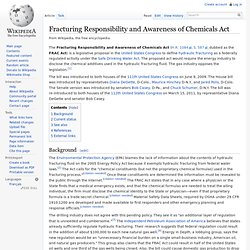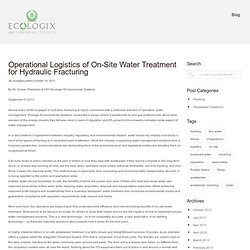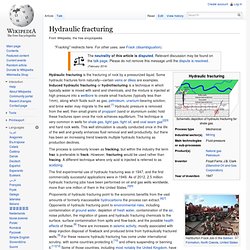

Pro. Fracking: Frequently Asked Questions (FAQ) It is legislation and federal agencies such as these that will determine the future of fracking in America.

After looking in depth at this incredible industry, there are two widely accepted truths about fracking which help put the issue into perspective. First, fracking comes with some level of environmental risk. Second, fracking provides large quantities of cheap energy. These two facts must be weighed appropriately to decide where one stands on the issue. The world has seen numerous revolutions in the energy industry over the last few centuries. In the United States a lot of our energy comes from natural gas. There are, however, downsides. Yet, alternative energy sources are not yet sufficient to power even a fifth of America's energy demands. 1. 2. 3. 4. 5. 6. 7. 8. 9. 10. 11. 1. Technically, the basic concept behind fracking has been used for over a century.
Source Roberts' invention set the groundwork for a company that still lasts today. 2. Source Source 3. Source Source 4. Source Fracturing Responsibility and Awareness of Chemicals Act. The Fracturing Responsibility and Awareness of Chemicals Act (H.R. 1084, S. 587, dubbed as the FRAC Act) is a legislative proposal in the United States Congress to define hydraulic fracturing as a federally regulated activity under the Safe Drinking Water Act.

The proposed act would require the energy industry to disclose the chemical additives used in the hydraulic fracturing fluid. The gas industry opposes the legislation.[1] The bill was introduced to both houses of the 111th United States Congress on June 9, 2009. The House bill was introduced by representatives Diana DeGette, D-Colo., Maurice Hinchey D-N.Y., and Jared Polis, D-Colo. The Senate version was introduced by senators Bob Casey, D-Pa., and Chuck Schumer, D-N.Y. Background[edit] The drilling industry does not agree with this pending policy. Current status[edit] The 111th United States Congress adjourned on January 3, 2011, without taking any significant action on the FRAC Act. See also[edit] References[edit] Operational Logistics of On-Site Water Treatment for Hydraulic Fracturing. By Eli Gruber, President & CEO Ecologix Environmental Systems September 9, 2013 Almost every driller engaged in hydraulic fracturing is highly concerned with a particular element of operation: water management.

Ecologix Environmental Systems, conducted a survey where it questioned oil and gas professionals about what element of the energy industry they felt was most in need of regulation and 85 percent of the answers indicated some aspect of water management. In a rare instance of agreement between industry, regulatory, and environmental leaders, water issues top virtually everybody’s list of what aspect of fracking is in most dire need of attention. While the industry is exploring water management solutions from a business perspective, environmentalists are demanding them at the grassroots level and legislative bodies are debating them on congressional floors. In reality, implementation of on-site wastewater treatment is a fairly simple and straightforward process.
Like this: Hydraulic fracturing. The first experimental use of hydraulic fracturing was in 1947, and the first commercially successful applications were in 1949.

As of 2012, 2.5 million hydraulic fracturing jobs have been performed on oil and gas wells worldwide, more than one million of them in the United States.[4][5] Frac job in progress Geology[edit] Mechanics[edit] Fracturing in rocks at depth tends to be suppressed by the confining pressure, due to the immense load caused by the overlying rock strata and the cementation of the formation. Veins[edit] Dikes[edit] Low-level minor intrusions such as dikes propagate through the crust in the form of fluid-filled cracks, although in this case the fluid is magma.
Non-hydraulic fracturing[edit] Fracturing as a method to stimulate shallow, hard rock oil wells dates back to the 1860s. Hydraulic fracturing in oil and gas wells[edit] The relationship between well performance and treatment pressures was studied by Floyd Farris of Stanolind Oil and Gas Corporation. Uses[edit]